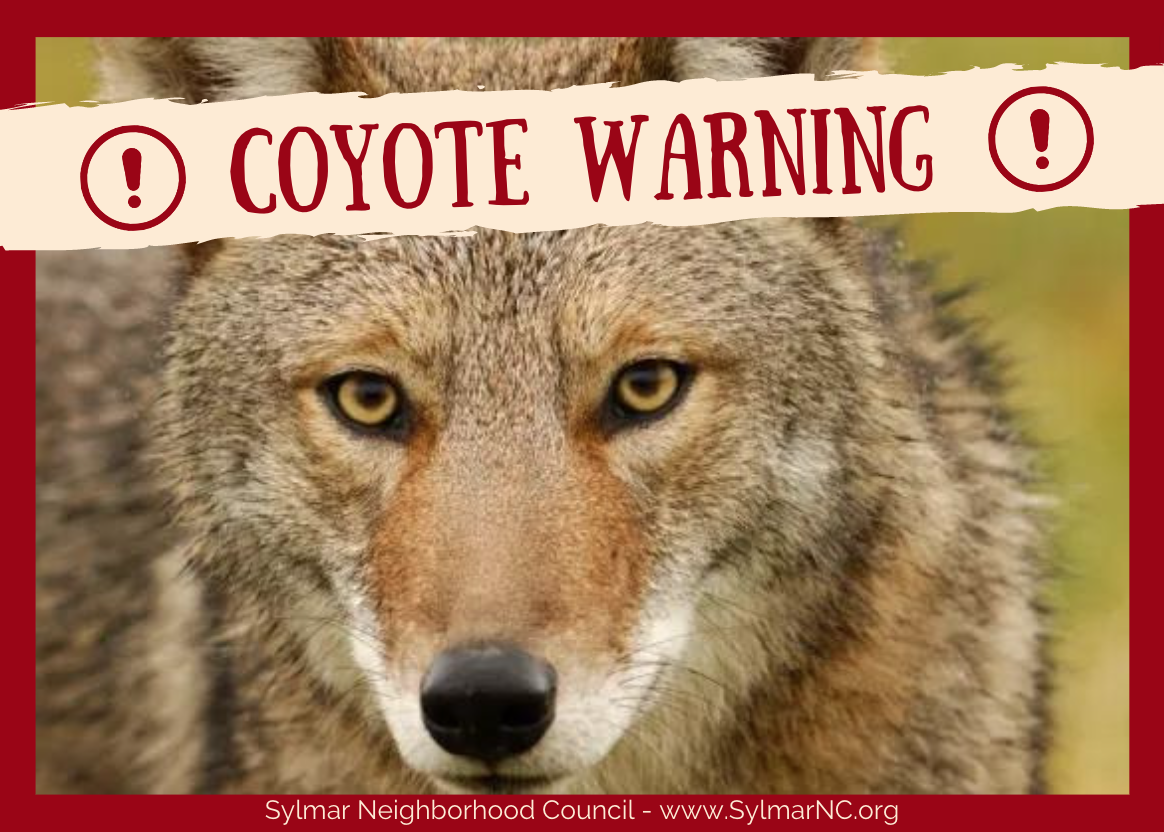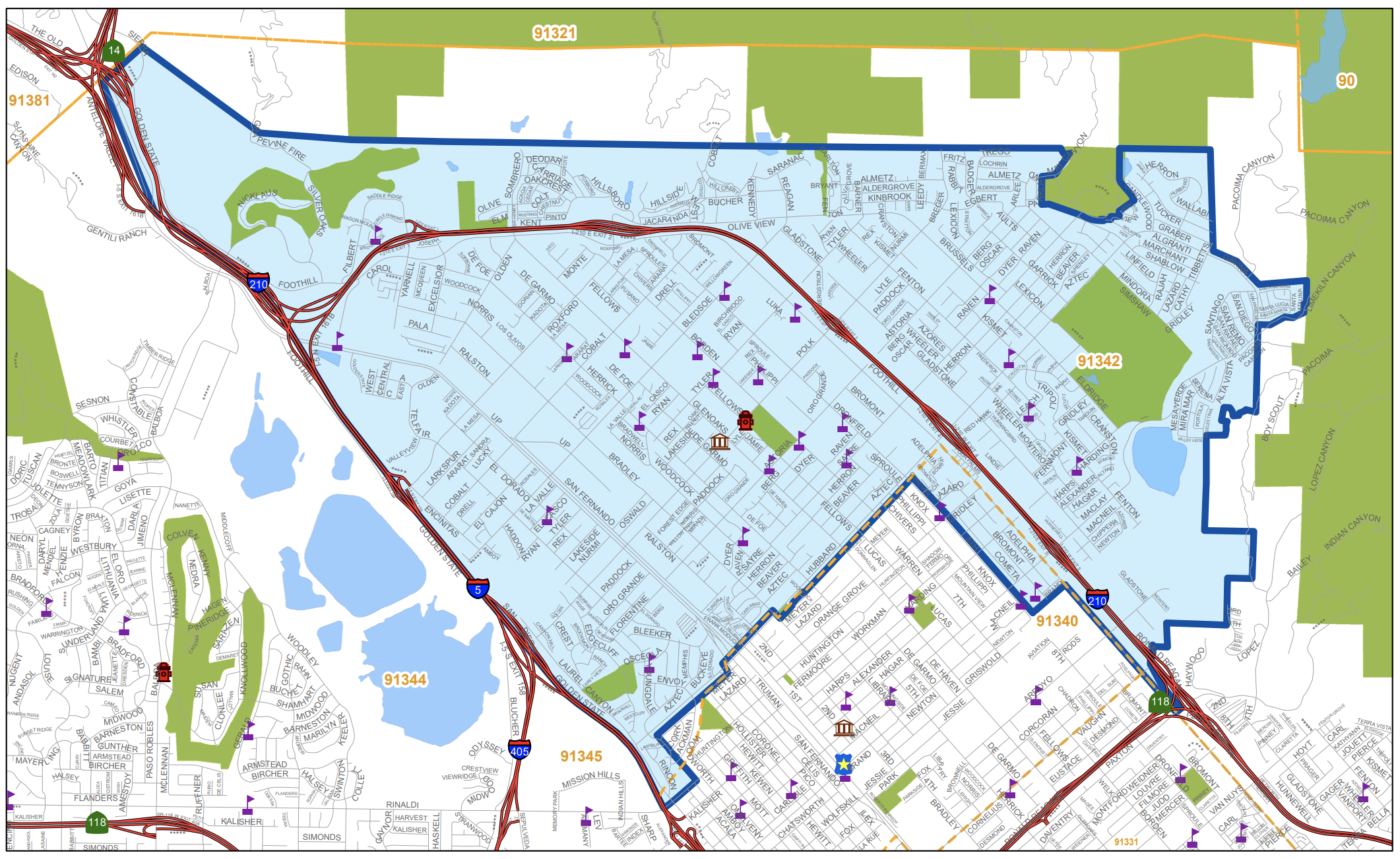-
(818) 833-8737
13521 Hubbard St.Sylmar, CA 91342
- Login
Coyote Mating Season • January 2023
Posted on 01/06/2023

Coyote mating season is underway.
While coyotes are a year-round concern, the breeding season for coyotes is most active between January and March, and male coyotes are typically more aggressive during this time. This also means that during this time, coyotes will begin a new pattern of movement.
Refrain from letting pets run free. If they are outside, keep them on a leash and have a close eye on them. This also goes for when walking the dog. Otherwise, keep pets indoors, especially at night.
Encounters or attacks on humans by coyotes are occurring more often as "our" land and "their" land grow and lessen. As seen in the current Press their behavior is or has become more bolden.
If you encounter a coyote with your pet, do not run away or turn your back to it. Calmly back away instead. You can also try to scare it away by making loud noises and acting aggressively.
If you notice any coyotes acting bold, like approaching people with food or with their pets, stalking children, or chasing joggers or bikers, report it to the authorities.
The best way to avoid conflicts with coyotes:
- Do not feed them (or any other wildlife for that matter).
- Remove bird feeders from your yards --as when seeds fall to the ground, they attract small animals, on which coyotes’ prey.
- Do not feed pets outside, as even scraps or morsels left behind may serve as attractants to wildlife.
- Keep garbage can lids tightly secured and take your trash out on the morning of trash pickup, and not the night beforehand.
- If you see a coyote, do not run from it. Much like when seeing a loose dog, be aware of it, yet calmly walk away, and inside if possible.
- Do not let your pets run free and/or unattended.
-
If you are out walking your dog, especially after sunset and at night, it is best to refrain from using retractable leashes. If you are too far from your dog, a coyote may only see the dog and not the human that is attached to the dog, given the reach of the retractable leash. Also, if walking after sunset, be extra aware of your surroundings – maybe even keep a flashlight with you, as a deterrent.
Coyotes (and other wildlife) have habituated into our world/lifestyles, which is why they are often seen during the daytime and close to our homes and businesses. However, if you see a coyote in your yard, there are a few techniques that you can try to "re-instill" their natural fear of humans. These include yelling and waving your arms, banging pots & pans, sounding a blow horn, shining bright lights (if at night), squirting hoses, or throwing objects towards them. Of course, all of this should be done at a safe distance.
And while you do not need to report all coyote sightings to Animal Control, it is good to report any encounters with those who appear aggressive, fearless, sick, or who despite the removal of the things that may attract them, continue to frequent your property.
In just a couple of months, the pups that are conceived during the next few months (February, March, April, and May) will join our world. They will likely take on the very same habits that are learned from their mothers/social units.
Did you know?
Male coyotes can become more territorial during this time of the year – and while the fact is, coyotes always pose a risk to dogs and other small pets that risk increases during mating season. Therefore, large dogs may present as competition. Small dogs and cats may present as prey.
Most coyotes will avoid getting too close to humans (as well as to pets who are accompanied by humans) however, it is imperative that you do not seek opportunities to engage with them, as this has the potential to annoy them and thus could prompt a conflict.
Also,
Coyotes mate from January to March, the average gestation (pregnancy) period for a coyote is about 60 days; therefore pups will be born any time from mid-March to mid-May. Coyotes appear to be strongly monogamous and so far, bonds between the alpha pairs have only been broken upon the death of one of the pair.
The Den
Pup season is the only time coyotes will voluntarily use a den; otherwise, coyotes usually sleep above ground in the open or in cover. Dens may consist of a hollowed-out tree stump, rock outcrop, or existing burrow made by raccoons, skunks, or other medium-sized carnivores. Coyotes will also build dens from scratch by digging a hole. They usually prefer some protective cover at the den, such as bushes or trees, and some type of slope for drainage. It is not uncommon for mothers to move their young from den to den to keep them protected or to reuse the same den over multiple years. Some coyotes select secluded areas for their dens, whereas others in more urbanized areas have less selection and may use dens near buildings or roads or even in parking lots.
Life Expectancy - In captivity, coyotes can live 13 to 15 years but in the wild, most die before they reach three years of age.

CLICK HERE - Candidate Application!


MyLA311
Upcoming Meetings & Events

My LA 311

Area Boundaries and Map
View our neighborhood council boundaries for which we deal with.

EMPOWER LA

NEIGHBORHOOD COUNCIL CALENDAR & EVENTS
The public is invited to attend all meetings.

NEIGHBORHOOD COUNCIL FUNDING SYSTEM DASHBOARD

SUBSCRIBE TO NC MEETING NOTIFICATION


